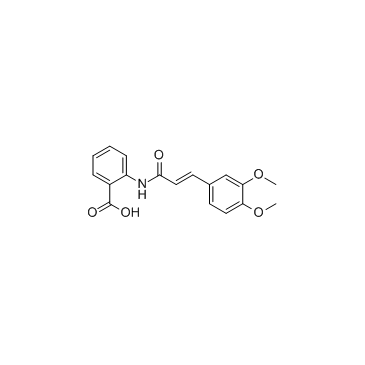| 结构式 | 名称/CAS号 | 全部文献 |
|---|---|---|
 |
卡巴克络
CAS:69-81-8 |
|
 |
曲尼司特
CAS:53902-12-8 |
| 结构式 | 名称/CAS号 | 全部文献 |
|---|---|---|
 |
卡巴克络
CAS:69-81-8 |
|
 |
曲尼司特
CAS:53902-12-8 |